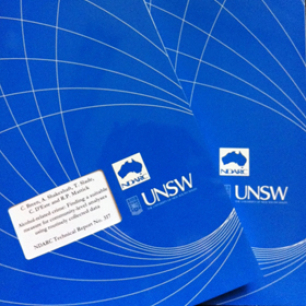NDARC Technical Report No. 265 (2007)
EXECUTIVE SUMMARY
Background: Fentanyl is a potent synthetically produced opioid agonist with an important role in the treatment of strong chronic pain, such as cancer pain. However, the drug does carry the risk of fatal opioid overdose if used inappropriately. In Australia, the most common forms of commercially available fentanyl include a transdermal patch, a lozenge or injection.
Small numbers of fentanyl overdose deaths have occurred from medically prescribed fentanyl patches, usually when the medication was not used as prescribed, or was used by someone other than to whom it had been prescribed. In the United States prior to 1996, reports of fentanyl abuse through the Drug Abuse Warning Network were typically low, although increases in fentanyl emergency department mentions and fentanyl-related deaths were reported by 2002 and 2003.
Clandestinely produced fentanyl, though currently generating some concern in the United States, is not a new phenomenon. Fentanyl and several potent analogues have been produced and sold as “synthetic heroin” at least as early as 1979. Deaths involving clandestinely produced fentanyl have been reported since then from the United States, Sweden, the Ukraine, Russia, and Denmark. The most recent report is a series of 272 fentanyl overdose deaths in Detroit, Chicago and New Jersey occurring over a period of a few months in the United States (Boddiger 2006). Fentanyl was either sold separately or added to street heroin or cocaine, and laboratories producing fentanyl have been discovered in both the United States and Mexico.
Triggered by this most recent report of US fentanyl fatalities, this report considers the likelihood of fentanyl misuse by Australian injecting drug users (IDU). We aim to present a summary of what is known about the extent of diversion and clandestine production of fentanyl among IDU, and any harms associated with its use in this context.
Method: Data sources consulted included: fentanyl prescription data from the Australian Government Department of Health and Ageing; the Illicit Drug Reporting System (IDRS); the Australian Needle and Syringe Program (NSP) survey; and the National Coroners Information System (NCIS).
Results: Low numbers of transdermal fentanyl have been prescribed in Australia since the drug was listed on the Pharmaceutical Benefits Scheme (PBS) in 1999, with only gradual increases over time.
There were no mentions of fentanyl use by the injecting drug users interviewed as a part of the 2005 IDRS or NSP surveys. There were also no mentions of fentanyl diversion or misuse by the key informants in the 2005 IDRS.
Since 2004, two fentanyl-related deaths have been recorded in the NCIS. The first was a case of acute fentanyl overdose in an ambulance officer who died after injecting a vial of fentanyl intranasal spray, presumably obtained from his workplace. The second fatality had limited information available, but fentanyl was detected at lethal levels in post-mortem toxicology in addition to other drugs in toxic concentrations.
Conclusions: Despite recent reports of a number of deaths in the United States involving clandestinely produced fentanyl (Boddiger 2006), diverted or clandestinely produced fentanyl does not yet appear to pose a major threat to IDU in Australia. Fentanyl continues to have an important use in the treatment of chronic pain, and this must not be put under threat by, as yet, unfounded concerns of fentanyl misuse in Australia. However, drug markets are dynamic, and continued monitoring of the harms associated with injecting drug use, as well as drug use patterns among sentinel groups of IDU, is essential.
Citation: Gibson, A., Larance, B., Roxburgh, A., Degenhardt, L. and Black, E. (2007) The extent of diversion of fentanyl for non-medical purposes in Australia: What do we know?, Sydney: National Drug and Alcohol Research Centre.


